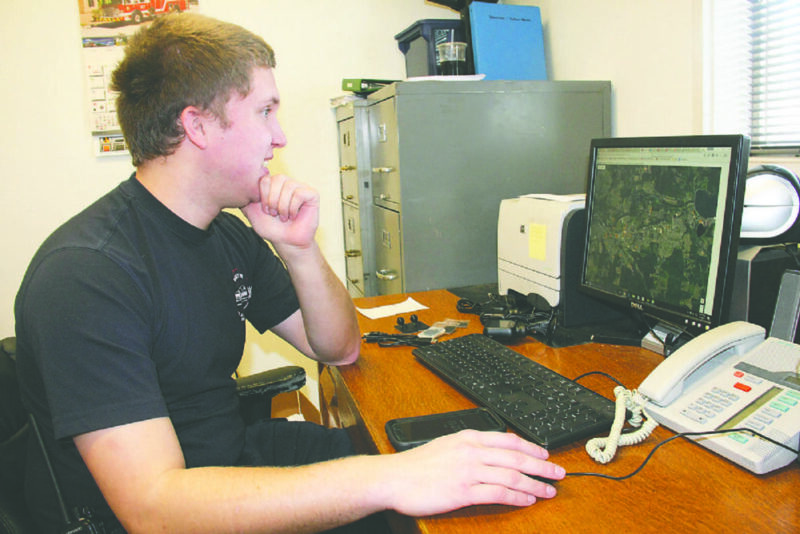Sean C. Morgan
Picture this: An individual down the street from you suffers a heart attack and dies before medics can get there.
You are certified in CPR but you didn’t know it was happening – until too late.
The Sweet Home Fire and Ambulance District has an answer: a smartphone app called PulsePoint, available for iPhones and Android phones, which provides notification of nearby medical emergencies and locations for automated external defibrillators.
According to PulsePoint, 57 percent of U.S. adults say they have had CPR training and most would be willing to use CPR or AED to help save a stranger’s life, yet only 11 percent say they’ve used CPR in an actual emergency.
In an emergency, life-saving help can be even closer than medics and can make a difference, said SHFAD Lt. Zach Lincoln.
Albany and Tangent fire districts, Linn County Sheriff’s Office and Samaritan Health Services have paid for the use of the app in Linn County, Lincoln said.
“It uses information from Linn County Sheriff’s Office and alerts users. The primary purpose is to notify them of a CPR event near their area. It’s basically an Active 9-1-1 app for the public.”
People who are CPR-trained can respond and provide CPR prior to the arrival of emergency medical services, Lincoln said. Even after medics have responded to a medical emergency, extra hands can be helpful.
“Sometimes, we’re limited (personnel-wise),” Lincoln said. “If someone shows up after I’m there, we could definitely use them if they know CPR.”
A second app shows the locations of AEDs, several of which are located in downtown Sweet Home and are available for use in emergencies.
“If anybody has any other publicly accessible AED, notify me or enter them in the AED app,” Lincoln said.
Right now, the app alerts users in a quarter-mile radius around an emergency, Lincoln said. That will soon increase to half a mile.
The system is already in use in Sweet Home, and in one example, six app users were notified 47 seconds prior to medics being dispatched to an emergency at 9:18 a.m. at Avamere Twin Oaks at 950 Nandina St., Lincoln said. While it didn’t prove necessary in that case, Lincoln finds value in the fact that at some point it will make a difference and save a life.
Right now, the app has 158 local users, Lincoln said.
“We’d obviously like that number to be as high as it could be.
“We’re very short-staffed. If we’re up in a remote area of our district, you might make it three to five minutes before we do.”
When medics are in a remote area or transporting patients, those medics are not available for other calls.
“A lot of times, we only have two people staffing the station,” Lincoln said. After those medics are on calls and out of the station, the district relies on calling back off-duty medics and CPR-trained quick response teams to handle additional calls.
Again, it’s an area where the public can help save a life, he said.
The district’s tools are useful, Lincoln said, but even more important and effective than medical equipment is early CPR and AED use.
When successful CPR or an AED is used within the first minute of a cardiac event, some 40 percent of victims survive, said Fire Chief Dave Barringer.
PulsePoint can also be helpful in a variety of other circumstances, ranging from the 96 structure fires around the county since Feb. 14, when the app went live in Linn County, to hazardous materials emergencies to water rescues, Lincoln said. Specifically, fire officials would like people who live along waterways to download and use the app.
Public help with water rescue can make a huge difference, he said.
“It’s extremely risky for us to do a water rescue.”
With more eyes on a river, the easier it can be to locate and successfully rescue a victim, Lincoln said.
“Everybody should know CPR,” Lincoln said. “We do offer classes in-house. We have four certified instructors.”
The Sweet Home Fire and Ambulance District schedules classes as needed, when six persons request the training. The cost is $50 for CPR and $60 for first-responder training.
To contact SHFAD or Lincoln, call (541) 367-5882.
Samaritan Health Services offers an ongoing schedule for CPR training. Visit http://www.samhealth.org/health-services/classes-and-events for more information.
SHFAD continues to take advantage of technological advances to improve its service, Lincoln said, and earlier this month began using a pair of new laryngoscopes purchased with money with a $4,000 grant provided by the Confederated Tribes of the Siletz Indians and $1,000 in district funds.
Battalion Chief Shannon Pettner applied for the grant, Lincoln said.
The device is used by medics to create an artificial airway (a definitive airway) in patients, Lincoln said.
The device includes a camera on a line that can be inserted into a patient’s throat. A video image is displayed on a monitor attached to the camera.
It is used to watch the end of a breathing tube as medics insert it past a patient’s vocal cords into the trachea, said Scott Moehlman, a paramedic student at the College of Emergency Services. With it, medics can make sure the breathing tube is inserted into the trachea instead of the esophagus.
The device decreases the chances that medics must perform a tracheotomy, which is a last resort to restore breathing, Lincoln said.





